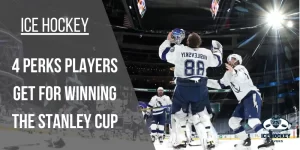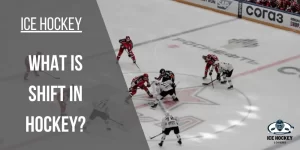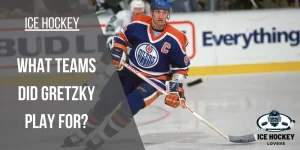Hockey Holding Penalty: What is a Holding Penalty in Hockey?
Regarding the thrilling sport of hockey, penalties are essential in maintaining fair play and ensuring a level playing field for both teams. One such penalty that frequently arises during the game is the hockey holding penalty.
In this article, we will dive into the world of hockey holding penalties, shedding light on what they are, how they occur, and the consequences they carry.
Table of Contents
What is a Hockey Holding Penalty?
A holding penalty is a violation that occurs when a player uses their hands, arms, or body to impede the progress of an opponent by grabbing onto them or restricting their movement. It is considered a minor penalty in ice hockey, resulting in the offending player being sent to the penalty box for two minutes. Holding penalties can be called on both the team in possession of the puck and the team defending against it.
The Rulebook Definition
According to the official rulebook, holding is “any act of restraining an opponent with the hands, arms, or stick.” This rule aims to ensure fair gameplay by discouraging players from impeding the movement of their opponents through illegal means.
Understanding the Impact
Holding penalties significantly impact the game, as they can disrupt the flow of play and create power play opportunities for the opposing team. When a player is caught holding, their team is forced to play with one fewer skater, giving the opposing team a numerical advantage for the penalty duration. This allows the opposing team to mount an offensive attack and potentially score a goal.
Differentiating Holding from Other Penalties
It’s important to distinguish holding penalties from others in ice hockey to grasp their implications fully. Holding is related explicitly to restraining an opponent’s movement using physical contact, whereas other penalties, such as tripping, slashing, or cross-checking, involve different infractions. Understanding these distinctions helps players, coaches, and fans better interpret the game and its penalties.
Identifying Holding Penalties
Holding penalties are called by the game officials, who closely monitor the players’ actions on the ice. They look for instances where a player’s actions impede the movement of an opponent, resulting in an unfair advantage. The officials consider factors such as the severity of the hold, the impact on the opposing player’s ability to skate or maneuver, and the intent behind the hold.
Common Situations Leading to Holding Penalties
Let’s explore some common scenarios that often lead to holding penalties:
1. Front-of-net battles:
In front of the net, players often engage in physical battles to establish a position or prevent the opposing team from scoring. Holding penalties may be called if a player holds onto an opponent to impede their ability to participate in the play or screen the goaltender.
2. Stick battles:
During stick battles, players often use their free hand to hold onto an opponent’s stick, preventing them from effectively playing the puck. This action can lead to a holding penalty if it inhibits the opposing player’s ability to make a play.
3. Pinning against the boards:
When a player pins an opponent against the boards and restricts their movement, it can result in a holding penalty. This situation often occurs along the boards during puck battles and can significantly impede the opponent’s ability to retrieve or maintain possession.
Examples of Holding Penalties
Let’s examine some scenarios that illustrate when a holding penalty may be assessed:
Example 1: A defenseman wraps his arm around an opposing forward, preventing them from reaching the net.
Example 2: A player uses their free hand to restrict the movement of an opponent, hindering their ability to pursue the puck.
Example 3: A forward grabs hold of an opposing player’s stick, preventing them from making a play or gaining control of the puck.
In all these examples, the actions described constitute a holding penalty as they impede the opponent’s movement or restrict their ability to participate fully in the game.
Frequently Asked Questions
How long does a player serve in the penalty box for a holding penalty?
A holding penalty typically results in a player serving two minutes in the penalty box.
Can a holding penalty result in a penalty shot?
No, a holding penalty does not lead to a penalty shot. It results in a power play opportunity for the opposing team.
Are there different types of holding penalties in hockey?
Holding penalties are generally categorized as minor penalties. However, there can be variations based on the severity of the infraction.
Conclusion
Holding penalties play a significant role in ice hockey, impacting the flow of play, creating power play opportunities, and testing player discipline. Understanding the nuances of holding penalties and implementing effective defensive strategies can help players and teams minimize penalties while maintaining a solid defensive presence.

Who is Austin Taylor?
Meet Austin Taylor, your go-to source for everything ice hockey! With a passion for the sport that’s as deep as the ice itself, Austin Taylor brings you concise, expert insights and nitty-gritty details on all things hockey. From gear reviews to strategy breakdowns, Austin Taylor is your trusted guide to navigating the exhilarating world of ice hockey. Get ready to lace up your skates and dive into the game with Austin Taylor as your ultimate companion.




